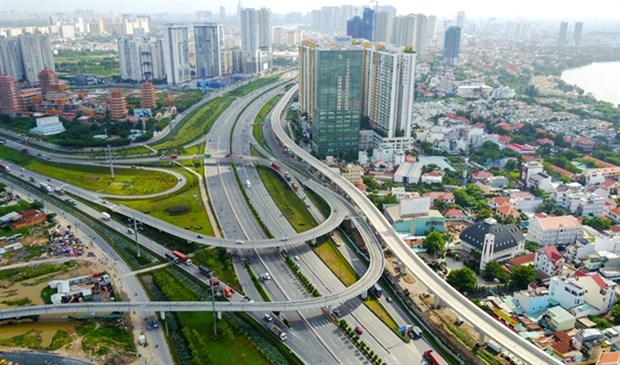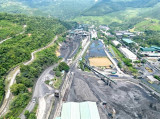PPP model needs more balancing, equality for private investors
Vietnam's increased demand for infrastructure development in the coming years requires governmental policies that encourage the private sector's participation, said economists and policymakers.
 View of an elevated road system in HCM city
View of an elevated road system in HCM city
According to estimates from the Asian Development Bank (ADB), by 2030, Vietnam's basic infrastructure investment needs will amount to around 480 billion USD.
Infrastructure projects play a key role in spearheading the country's socio-economic development, especially those in the transport and industrial sectors.
To speed up the process, the government has implemented several legal frameworks and policies, including the Law on Investment in the Form of Public-Private Partnerships (PPP) in 2020 and several decrees and regulations.
Such moves aim to provide comprehensive guidelines and regulations on how to form public-private partnership projects.
However, there are still many shortcomings and limitations, according to economists.
Vu Tien Loc, Chairman of the Vietnam International Arbitration Center (VIAC) and former Chairman of the Vietnam Chamber of Commerce and Industry (VCCI), said the private sector's participation would be the solution to the country's infrastructure problems, given the state's limited budget.
In addition, PPP projects typically would offer opportunities to introduce more efficient financial and construction management, as well as more advanced technologies.
Current regulations, however, had not managed to find a balance for PPP projects on responsibilities, interests, and risk sharing among players, a major setback in attracting more private investors.
Le Dinh Vinh, a lawyer from Vietthink Law Firm, said many PPP projects faced prolonged land transfer, compensation, clearance, and resettlement issues.
It's often difficult for investors to gain access to long-term credit or benefit from lower interest rates. There have also been grievances over the slow disbursement of state capital.
According to Vinh investors often face more risks in the planning and construction phases. Even when a project is completed, risks continue with capital return, contract modification, and revenue-sharing mechanisms.
In addition, policy changes, inflation, exchange rates, and taxes remain all factors that can hurt investors' bottom line.
A common issue investors have with the current PPP framework is a lack of unity, clarity, and transparency across economic sectors and localities. In many places, the state's representative still views private investors not as partners but as subjects for micro-management.
When things go wrong, investors' interests are often the first to be ignored.
To address said issues, Loc urged the Government to quickly implement a detailed description of each party's rights and obligations, emphasising the amount of risk and difficulties they have to handle.
It's time the Government started building a conflict management mechanism for PPP projects to handle potential disputes during and after implementation./.
VNA
 Trade promotion and connection strengthened for collective economic sector
Trade promotion and connection strengthened for collective economic sector
 Multifaceted effectiveness from Japanese projects
Multifaceted effectiveness from Japanese projects
 Provincial DoIT holds 2024 energy manager training course
Provincial DoIT holds 2024 energy manager training course
 The key to boosting production and enhancing product competitiveness
The key to boosting production and enhancing product competitiveness
 Synchronous planning to promote sustainable development
Synchronous planning to promote sustainable development
 International Exhibition on Smart Furniture Solutions (SFS VIETNAM 2024): Greening the wood export industry
International Exhibition on Smart Furniture Solutions (SFS VIETNAM 2024): Greening the wood export industry
 Criteria of 2024 projected to early accomplishment
Criteria of 2024 projected to early accomplishment
 Import-export turnover reaches nearly US$53 billion
Import-export turnover reaches nearly US$53 billion
 Binh Duong vibrant with e-commerce week and super promotional month
Binh Duong vibrant with e-commerce week and super promotional month
 Training workshop on restructuring of industry and trade successfully organized
Training workshop on restructuring of industry and trade successfully organized






